Naviglio Grande
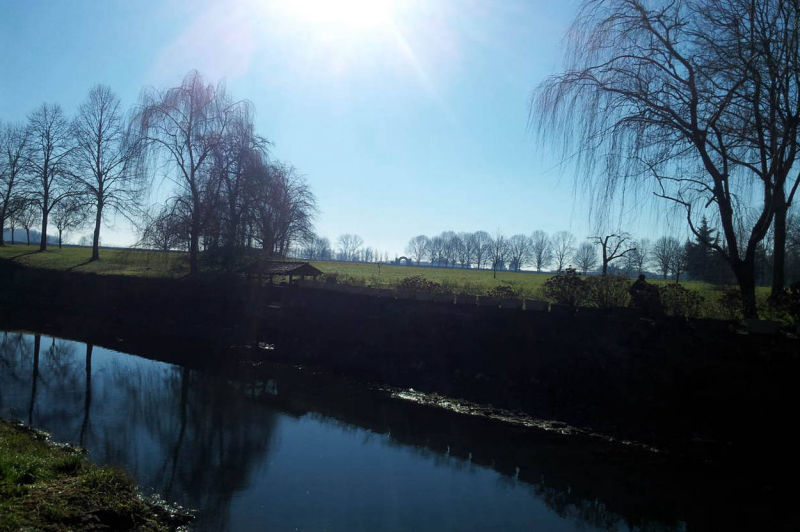

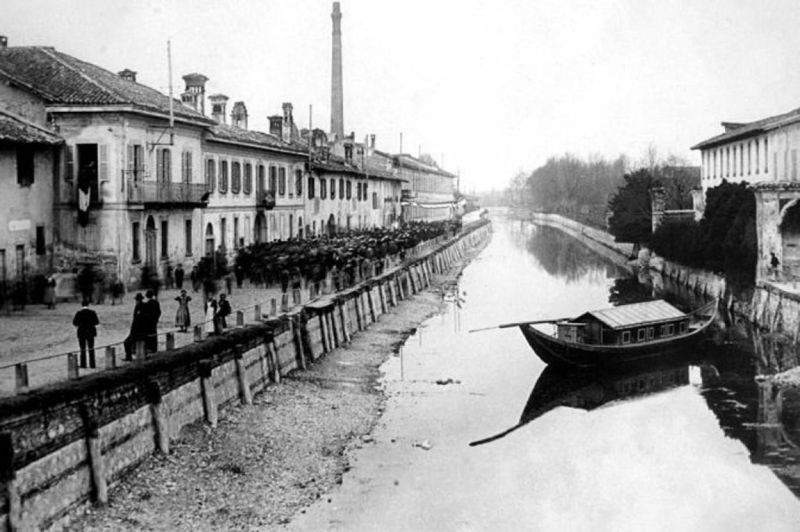
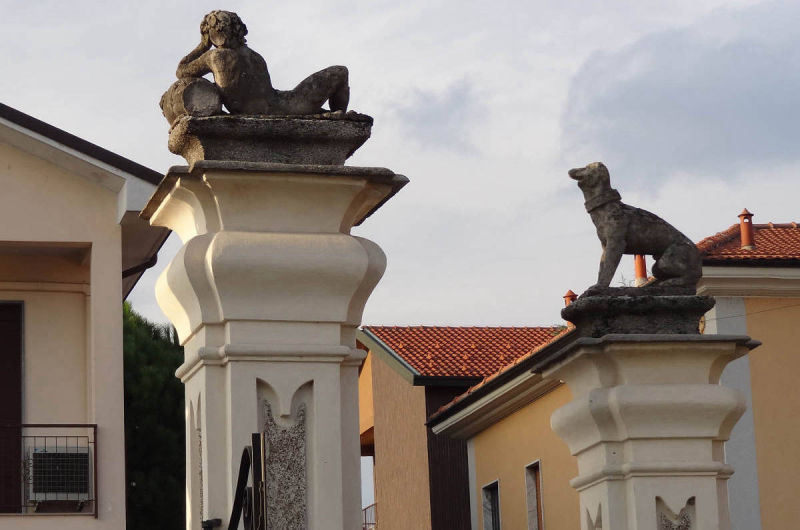
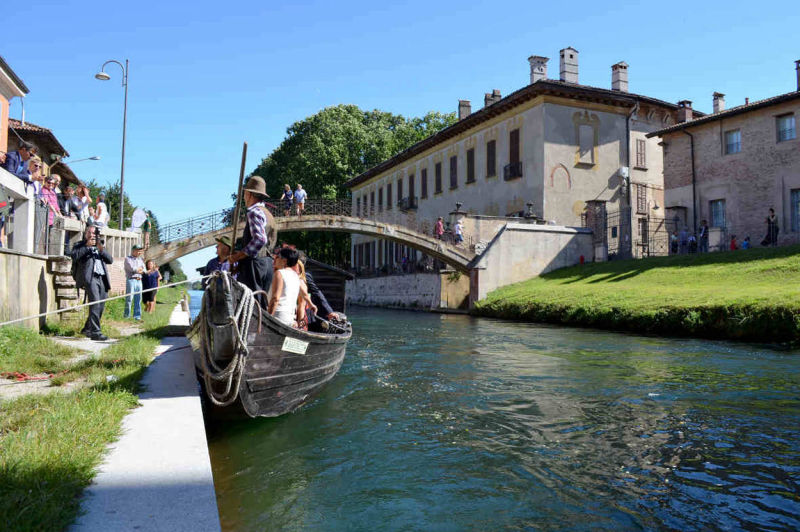
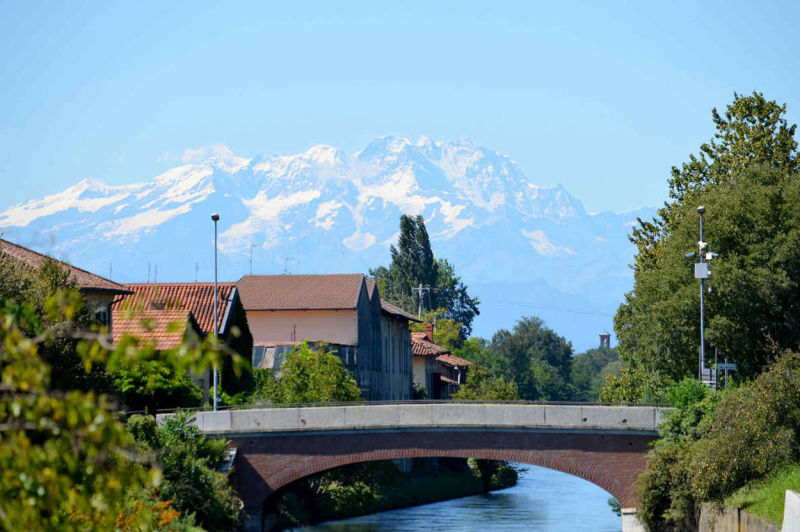
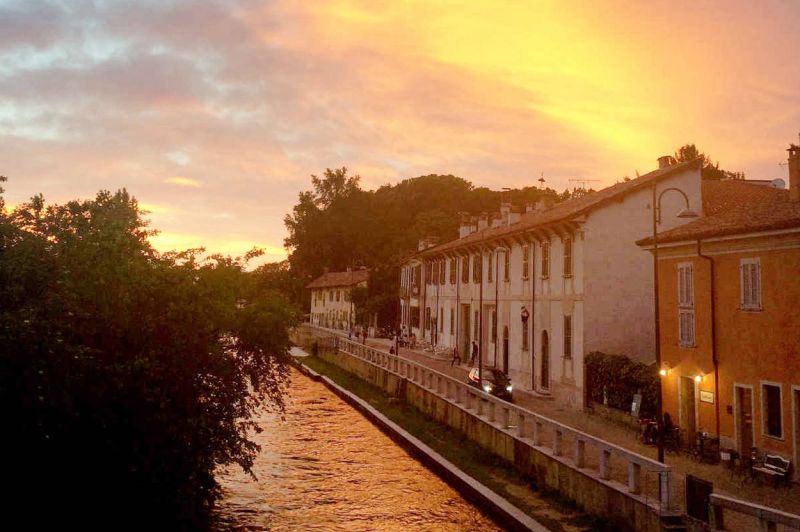
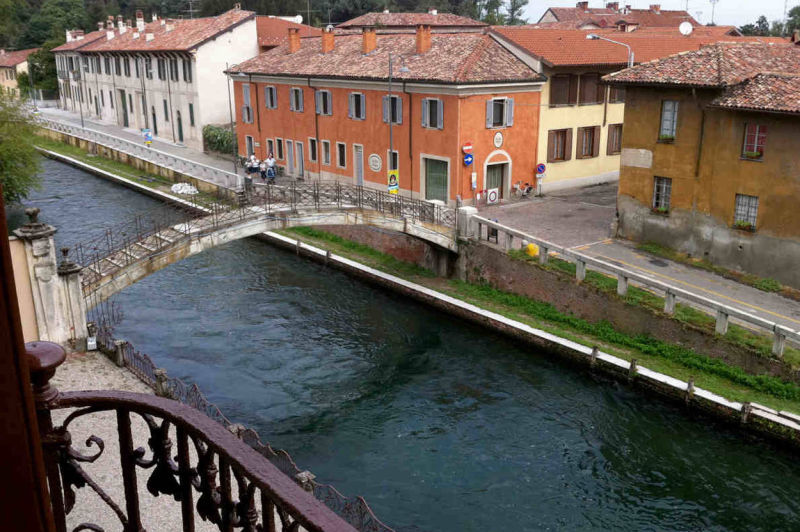
The Naviglio Grande was originally derived from the River Ticino at Tornavento, hamlet of Lonate
Pozzolo (VA). From here it flew in the direction SE up to Abbiategrasso, and then in the direction
NEE after a course of approximately 50 km, ending in the Wet Dock of Porta Ticinese in Milan.
In 1179 the Milanese decide to dig a long canal that, starting from Tornavento on the Ticino, brought
the water of the river towards Milan, running for a long initial portion parallel to the Ticino.
In the end
this work will lead to the creation of the Naviglio Grande.
In the year 1245 the Naviglio was involved for the first time as a means of defense when the Milanese
opposed to Federico II, allied with Novara, and succeeded in rejecting his attacks.
The foundation of the Cathedral (Duomo) in 1386 and the need to move to the center of Milan tons of
marbles extracted from the shores of Lake Maggiore (Candoglia) enhances the use of the Naviglio
Grande.
On the blocks of marble there was the writing A.U.F. , “ad usum fabricae”, i.e. exempt from the
payment of tolls because used for the construction of the Cathedral.
From here the saying "a ufo":
without paying.
In the next four centuries Milan passed from the Domination of the Sforza to the French and
subsequently to the Spanish. Under the new rule the agricultural and water works were neglected in
favour of the construction activities: many nobles built some villas, in the villages near Milan, to live
or simply to spend the summer season.
For more information about the Naviglio Grande you can visit the web site:
I Navigli lombardi
Navigazione sui Navigli
THE NAVIGLIO GRANDE IN ROBECCO
In Robecco the Naviglio flows in a beautiful setting made of villas and gardens realized at the
beginning of the XV century by rich noble families of Milan.
Along the towpath (“alzaia”) you can
pleasantly admire views of natural landscapes and artistic-architectural beauties of indisputable value.
If you then want to enjoy in its completeness one of the most beautiful and evocative places of the
Navigli, from Cassinetta di Lugagnano to Castelletto di Cuggiono, you can try the thrill of navigation
on the Naviglio with “la linea delle delizie”.
For information consult the site Itinerario delle Delizie.
Mobirise website builder - More here